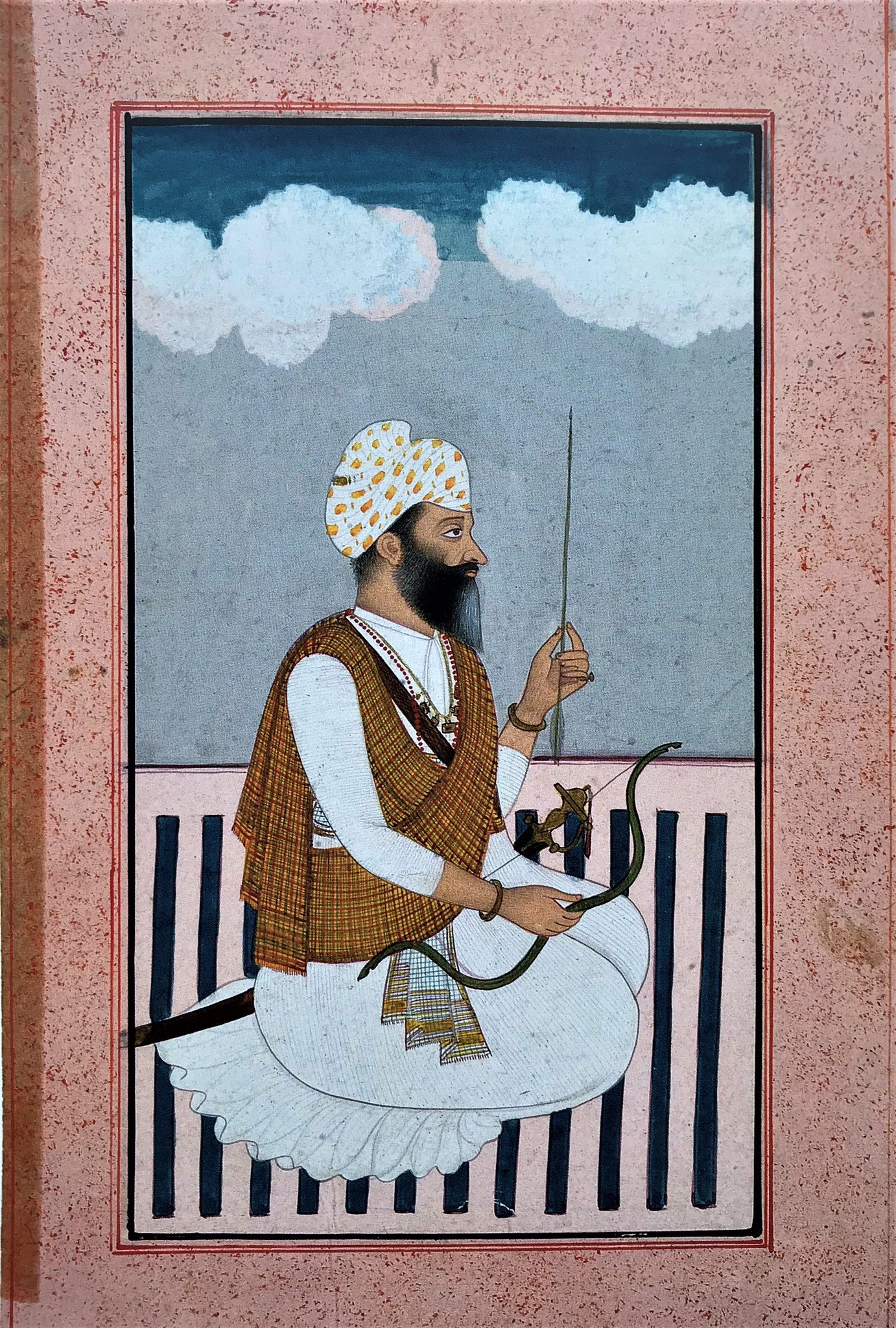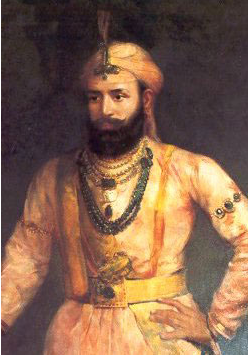Ahluwalia (misl) on:
[Wikipedia]
[Google]
[Amazon]
 Ahluwalia (also transliterated as Ahluvalia) was a
Ahluwalia (also transliterated as Ahluvalia) was a

 * Fateh Singh Ahluwalia (10 July 1801 – 20 October 1837) (b. 1784 – d. 1837)
*
* Fateh Singh Ahluwalia (10 July 1801 – 20 October 1837) (b. 1784 – d. 1837)
*
 Ahluwalia (also transliterated as Ahluvalia) was a
Ahluwalia (also transliterated as Ahluvalia) was a misl
The Misls (derived from an Arabic word wikt:مثل#Etymology_3, مِثْل meaning 'equal') were the twelve sovereign states of the Sikh Confederacy, which rose during the 18th century in the Punjab region in the northern part of the Indian ...
, that is, a sovereign state in the Sikh confederacy
The Misls (derived from an Arabic word مِثْل meaning 'equal') were the twelve sovereign states of the Sikh Confederacy, which rose during the 18th century in the Punjab region in the northern part of the Indian subcontinent and is cit ...
of Punjab
Punjab (; Punjabi: پنجاب ; ਪੰਜਾਬ ; ; also romanised as ''Panjāb'' or ''Panj-Āb'') is a geopolitical, cultural, and historical region in South Asia, specifically in the northern part of the Indian subcontinent, comprising ...
region in present-day India and Pakistan. The misl's name is derived from Ahlu, the ancestral village of the misl leaders. The Ahluwalia misl was one of the 12 major Sikh misls, and held land to the north of Sutlej river
The Sutlej or Satluj River () is the longest of the five rivers that flow through the historic crossroads region of Punjab in northern India and Pakistan. The Sutlej River is also known as ''Satadru''. It is the easternmost tributary of the Ind ...
.
History
Different scholars variously name the misl's founder as Sadho Singh, his descendant Bagh Singh, or Bagh Singh's nephewJassa Singh Ahluwalia
Sultan-ul-Qaum Sardar Jassa Singh Ahluwalia (3 May 1718 – 23 October 1783) was a Sikh leader during the period of the Sikh Confederacy, being the Supreme Leader of the Dal Khalsa. He was also Misldar of the Ahluwalia Misl. This period w ...
.
The misl rose to prominence under Jassa Singh, who was the first person to use the name "Ahluwalia". Originally known as Jassa Singh Kalal, he styled himself as Ahluwalia after his ancestral village of Ahlu.
Even after other misls lost their territories to Ranjit Singh
Ranjit Singh (13 November 1780 – 27 June 1839), popularly known as Sher-e-Punjab or "Lion of Punjab", was the first Maharaja of the Sikh Empire, which ruled the northwest Indian subcontinent in the early half of the 19th century. He s ...
's Sikh Empire
The Sikh Empire was a state originating in the Indian subcontinent, formed under the leadership of Maharaja Ranjit Singh, who established an empire based in the Punjab. The empire existed from 1799, when Maharaja Ranjit Singh captured Lahor ...
, the emperor permitted the descendants of Jassa Singh to retain their estates. After the British
British may refer to:
Peoples, culture, and language
* British people, nationals or natives of the United Kingdom, British Overseas Territories, and Crown Dependencies.
** Britishness, the British identity and common culture
* British English, ...
took over the Sikh territories in 1846, Jassa Singh's descendants became the ruling family of the Kapurthala State
Kapurthala State, with its capital at Kapurthala, was a former Princely state of Punjab. Ruled by Ahluwalia
Sikh rulers, spread across . According to the 1901 census the state had a population of 314,341 and contained two towns and 167 village ...
.
Royal dynasty
Sardars
* Jassa Singh (1777 – 20 October 1783) (b. 1718 – d. 1783) * Bagh Singh (20 October 1783 – 10 July 1801) (b. 1747 – d. 1801)
Rajas
 * Fateh Singh Ahluwalia (10 July 1801 – 20 October 1837) (b. 1784 – d. 1837)
*
* Fateh Singh Ahluwalia (10 July 1801 – 20 October 1837) (b. 1784 – d. 1837)
* Nihal Singh
Nihal Singh CB (4 May 1863 – 20 July 1901) was the Jat ruler of Dholpur state (1873–1901) in Rajasthan, India. Nihal Singh. Maharaj Rana of Dholpur.
References
*Dr. Ajay Kumar Agnihotri (1985) : "Gohad ke jaton ka Itihas" (Hindi)
*Dr ...
(20 October 1837 – 13 September 1852) (b. 1817 – d. 1852)
* Randhir Singh Randhir Singh may refer to:
* Randhir Singh of Kapurthala (1831–1870), ruler of the Indian princely state of Kapurthala
* Randhir Singh of Bharatpur (died 1823), ruler of the Indian princely state of Bharatpur
* Randhir Singh (Sikh) (1878–1961) ...
(13 September 1852 – 12 March 1861) (b. 1831 – d. 1870)
Raja-i Rajgan
*Randhir Singh Randhir Singh may refer to:
* Randhir Singh of Kapurthala (1831–1870), ruler of the Indian princely state of Kapurthala
* Randhir Singh of Bharatpur (died 1823), ruler of the Indian princely state of Bharatpur
* Randhir Singh (Sikh) (1878–1961) ...
(12 March 1861 – 2 April 1870) (b. 1831 – d. 1870)
* Kharak Singh
Kharak Singh (22 February 1801 – 5 November 1840) was the second Maharaja of the Sikh Empire. He was the eldest son of Maharaja Ranjit Singh, founder of the Sikh Empire and his consort, Maharani Datar Kaur. He succeeded his father on 27 June ...
(2 April 1870 – 3 September 1877) (b. 1850 – d. 1877)
* Jagatjit Singh
Maharajah Sir Jagatjit Singh Sahib Bahadur (24 November 1872 – 19 June 1949) was the last ruling Maharaja of the princely state of Kapurthala State, Kapurthala in the British India, British Empire of India, from 1877 until his death, in 194 ...
(3 September 1877 – 12 December 1911) (b. 1872 – d. 1949)
Maharajas
*Jagatjit Singh
Maharajah Sir Jagatjit Singh Sahib Bahadur (24 November 1872 – 19 June 1949) was the last ruling Maharaja of the princely state of Kapurthala State, Kapurthala in the British India, British Empire of India, from 1877 until his death, in 194 ...
(12 December 1911 – 15 August 1947) (b. 1872 – d. 1949)
*Paramjit Singh (b. 1892 - d. 1955)
*Brigadier
Brigadier is a military rank, the seniority of which depends on the country. In some countries, it is a senior rank above colonel, equivalent to a brigadier general or commodore, typically commanding a brigade of several thousand soldiers. In ...
Sukhjit Singh MVC
MVC may refer to:
Science and technology
* Maximum-value composite procedure, an imaging procedure
* Multivariable calculus, a concept in mathematics
* Multivariable control, a concept in process engineering
* Mechanical vapor compression, a desal ...
(b. 1934)
Crown Prince
* Tikka Raja Shatrujit Singh (b. 1961)References
{{Sikh Empire Misls * History of Sikhism Sikh Empire Princely states of India Princely states of Punjab History of Lahore History of Punjab History of Punjab, India